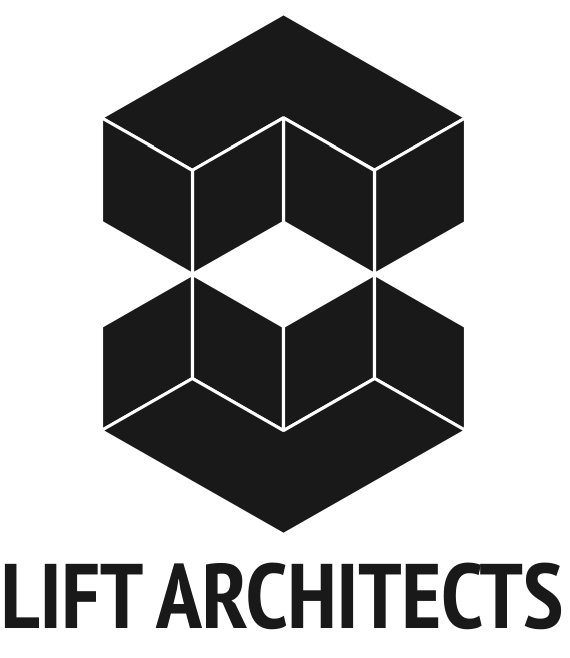Here is a model I've been working on to develop a wall system that could be digitally fabricated and used to store wine bottles in a unique way. The module, seen on the right, was develped using the Sculpture Generator 1 by Carlos H. Sequin, at UC Berkeley. The modules could be stacked and repeated to form a series of wine rack columns, or duplicated to form a unique wall system.
IDENTITY DESIGN FOR PJPR
This is one of the options for the new identity for Payne Jones Public Relations, a new start up company in Greenville, SC. The challenge was to create a visual logo for a client who primarily deals with written text. So, I decided to make use of the font itself to create an interesting visual identity for her firm. Make sure you check out the website also designed by [LIFT]architects at http://www.paynejonespr.com.
STEREOSCOPIC PROCESSING
According to Josh Nimoy, The Processing environment is the easiest Java compiler / interactive graphics and multimedia programming environment known to man. The system can be used to produce locally run pieces, as well as web-embeddable Java applets. After doing a little more research on the latest version of Processing, I came across one of the source codes for a drawing applet created by Theo Calvin, who based his code on an example put forth by Jeffery Tarbell. Where I played a part in this research was taking taking the script and adding a few lines of code in order to create a Stereoscopic Image that would give an illusion of surface "depth" when looking at these drawings through 3D glasses. Each drawing can be generated in a matter of seconds.
ADAPTIVE TENSEGRITY
This is a digital model that I created after reading Tristan d'Estree Sterk's essay on actuated tensegrity systems. I've rigged the system to work just like his actuated tensegrity system, so that as the actuator in the middle contracts, the tension members become more rigid, thus making the entire system stronger. The actuated system is one way to create a responsive tensegrity system that can adapt to changing environmental conditions to make a "learning" structure... however you could eliminate the actuator by making the tension members able to expand and contract, much like a muscle. I plan on pursuing this line of thought for a future skyscraper, but as yet, is still in a hypothetical stage.
Download Tensegrity Module.zip
Note: This software and its documents are in the public domain and are furnished "as is". The author, Andrew Payne, makes no warranty, expressed or implied, as to the usefulness of the software and documentation for any purpose. This work is licensed under a Creative Commons Attribution-Share Alike 3.0 United States License. http://creativecommons.org/licenses/by-sa/3.0/us/
TENSEGRITY TOWER
Who knew you could have so much fun with a few wood dowels and a little elastic cord. I created this as a first attempt to figure out how exactly tensegrity structures get assembled and "tuned" via adjusting the elastic cords so that each tension member has the same amount of tension as the others, thus keeping the structure at equilibrium. My next response will hopefully incorporate a responsive system by making the elastic cords out of electropieziolastic materials so that each member can contract or expand via electrical current, thus having a tensegrity system that could adapt to different situations.
CANTILEVERED TABLE
This is a detail of a table that I am creating for a welding class at Cell Space. The concept was to emphasize the cantilever by creating a table with only one leg and thin stainless steel tension wires. The table can support up to 50 lbs of pressure on the far end of the table without overturning and is designed to be assembled in smaller parts instead of one welded piece.









